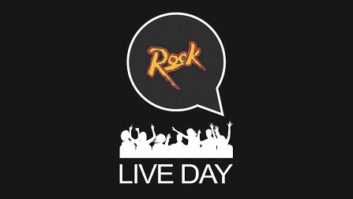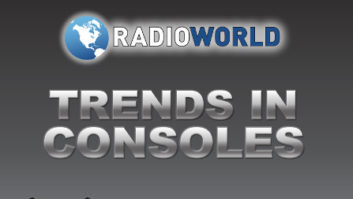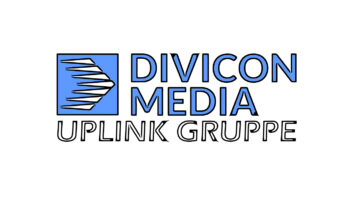Multicast Programming Is Part of the Job Description for Buzz Knight
(click thumbnail)Knight says working as part of the new digital radio alliance was ‘a really fantastic process … the spirit of cooperation is so bubbling over with enthusiasm that it’s contagious.’ “It’s been an interesting time.”
That may be the understatement of the year, but it’s also how Buzz Knight, Greater Media’s newly named vice president of program development, summarizes his first few weeks on the job.
On Jan. 9, Knight, a four-year Greater Media veteran who was already operations manager for Greater Media’s WBOS(FM) and WROR(FM) in Boston and WMMR(FM) and WMGK(FM) in Philadelphia, added duties that include developing new talent, enhancing the company’s current formats and developing HD-2 multicast programming.
Just over a week later, Greater Media joined the other members of the industry’s HD Digital Radio Alliance in unveiling an ambitious set of multicast formats for its five FM stations in Boston and its three FMs in Philadelphia.
‘Breeding ground’
Greater Media came to the alliance with early experience in multicasting, thanks to its cluster of three FM stations in Detroit, which launched HD-2 multicast programming last July.
“Detroit has really been our leader in this area,” Knight said. “They’ve been ahead of everyone in our industry and our company,” with formats that include soft adult contemporary “More Magic” complementing AC “Magic” WMGC(FM), and alternative rock “Riff 2” complementing mainstream rocker WRIF(FM).
As with most of the early HD multicasts, the new formats are offered to listeners as Webcasts as well as HD Radio subchannels.
“Riff 2, in particular, has been a breeding ground for certain musical things that have already made it to ‘Riff 1,'” the main WRIF channel Knight said.
With the formation of the alliance, Knight’s first big challenge was to choose multicast formats in Greater Media’s other large markets. In Philadelphia, those formats include rhythmic “Club Ben” to complement variety hits “Ben FM” on WBEN(FM) and “WMMaRchives,” drawing on the long rock history at WMMR(FM). In Boston, formats on the five multicasts will range from “Classical 2.0” on talker WTKK(FM) to acoustic “Coffeehouse” on AAA WBOS(FM) to an all-comedy channel on classic hits WROR(FM).
“We’re all going into it with some of that wild-eyed enthusiasm with which we first got started in the business,” Knight said of the varied formats debuting in the first phase of multicasting.
Starting from scratch
With no revenue coming from those subchannels in their first (commercial-free) 18 months on the air, Knight acknowledges that building programming in the HD-2 universe is “a process that’s going to start out slow,” with most programming being automated at the beginning.
As the new channels build an audience, though, “the hope would be that you start adding those touches that become the heart and soul of the radio station,” Knight said.
Even without spot revenue from the subchannels, Knight says Greater Media is looking for other ways to put creative content there at affordable costs.
“We may have to look in some situations and realize that if a certain spot barter deal helps us out on WROR-1, for instance, and gives us content on our side channel, we need to be open to that, ” Knight said.
With HD Radio receivers still almost nonexistent in the field, Knight says Webcasting will be critical to expose the new programming to a wider audience at first.
“A lot of it goes through the Web presence,” Knight said, “so a lot depends on the way the portals are organized.”
At Detroit’s WRIF, for instance, the front page of the station’s Web site contains a prominent “HD Radio” section that includes details on receiver availability, a trade-in offer for HD Radio receivers and a link to the “Riff 2” multicast.
As the importance of the multicast grows, Knight says Greater Media expects to begin using external promotions more aggressively to build awareness of the HD-2 channels.
Knight says the support for HD Radio within Greater Media, from President/CEO Peter Smyth down the executive chain, has been unwavering.
The satellite competition
With all the attention that satellite radio has garnered in recent months, Knight says the timing of the HD-2 announcements was not a response to Sirius’ big Howard Stern promotional blitz in December and January.
“Greater Media has been working on this initiative for years, and they’re finally bearing fruit now,” he said. “It has nothing to do with the satellite timing.”
Knight believes that HD Radio’s fate won’t be tied to that of satellite radio – and that it has the potential to bring about a renaissance of traditional radio.
“Just like those age-old stories where a category grows because of a new competitor, there’s the hope that this category will grow as well.”
In the meantime, Knight’s portfolio includes not only the uncharted terrain of HD-2 but also the responsibility to continue building the programming on Greater Media’s established stations. He continues to serve as operations manager in Philadelphia and Boston.
“I think prioritization ends up being an important part of the task moving forward,” he said. “We have these other major properties to advance and grow ratings for.”
Knight hopes that the development of the multicasts will bring back more of a sense of risk-taking throughout the company, including on the main channels.
“We have allowed a lot of the things around us to take away our creative strut,” he said.
For himself, Knight said the process of coordinating multicast formats through the alliance brought back some of that strut.
“The alliance was a really fantastic process,” he said. “I was right in the midst of it, and the ease of working with everybody, the spirit of cooperation is so bubbling over with enthusiasm that it’s contagious.”
Knight, whose career included three years on the air at WNEW(FM) New York and stops in Norfolk and Columbus, says the alliance negotiations gave him a chance to renew some old acquaintances, including that of his former Columbus Infinity competitor Dave Robbins, now CBS Radio’s director of digital programming.
“Everyone is on the same page and enthused, challenged by it,” Knight said.
How is your organization planning to use multicasting, if at all? Tell us at [email protected].













